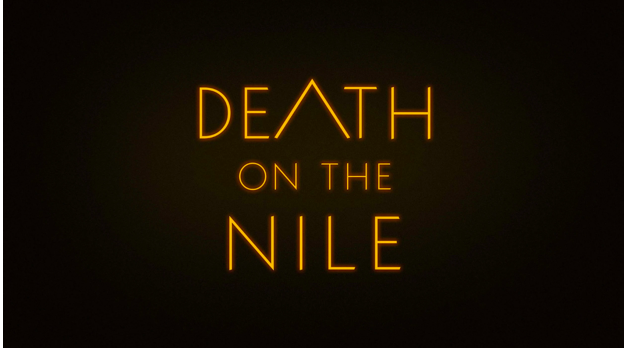Branagh’s latest- “Death on the Nile” takes death to a whole new level
“Death on the Nile” poses a new question for viewers: is love worth dying for?
February 16, 2022
Imagine you are drifting in the secluded waters of the Nile aboard the S.S. Karnak cruise for a celebration of love- a wedding party for the esteemed heiress Linnet and her husband, Simon Doyle. Tucking the wisps of hair into your exorbitant, silk scarf with hints of aquamarine as the summer breeze grows stronger, you gaze past the wondrous pyramids of Giza and wave to the poverty-stricken children playing in the river with one hand and a glass of champagne in the other. However, this daydream abruptly comes to an end when the hostess is found dead in her bedroom- a gunshot wound by her temple.
This was the case for the characters of “Death on the Nile,” based on the novel by Agatha Christie. As the only person to direct their own portrayal of the beloved detective Hercule Poirot, director and actor Kenneth Branaugh reprises his role in the sequel to “The Murder on the Orient Express.” The movie opens with Poirot’s tragic backstory, taking place in Belgium during World War I, that leads to a dead lover and both physical and figurative scars covering his face, prompting his iconic mustache.
In this particular adventure, Poirot embarks on a journey to Egypt and reunites with his friend Bouc (Tom Bateman), the only other returning character. There, he is introduced to the Doyles and meets the suspects or the remaining members of the wedding party- Linnet’s Cousin Andrew (Ali Fazal), singer Salome Ottoman (Sophie Okonedo) and her niece Rosalie (Letitia Wright), Bouc’s mother Euphemia (Annette Bening), Dr. Ludwig (Russel Brand), maid Louise (Rose Leslie), lovers Jennifer Saunders (Marie Van Schuyler) and Mrs. Bowers (Dawn French), and finally Jacqueline (Emma Mackey), who was also Linnet’s best friend and Simon’s previous fiancée just six weeks prior.
As the ship cruises down further into the murky waters of the Nile, mysteries behind each character and their ulterior motives begin to unravel, and twists and turns lead Detective Poirot left in a heated interrogation with his primary suspect and doting friend, Bouc. The last remaining scenes cut through the mysterious waters like a blade, building up tension yet clearing up the audience’s view of the final destination.
The movie’s extravagant, beautiful depictions of the rich life in the 1930s in combination with the lively, entertaining plot meant to feed mystery-lovers, brings life into the movie and makes it a mediocre thriller for people of all ages to enjoy. All though the identity of the killers seemed quite obvious and underwhelming, it is not the mystery aspect that makes this movie but rather its focus on love.
With Valentine’s Day right around the corner, the theme of love flowing throughout the movie brings it above average ranking. From Rosalie and Bouc’s blossoming, yet tragic romance to Simon, Linnet, and Jacqueline’s tragic yet petty love triangle, the movie emphasizes how people will do anything for love. Even Poirot’s foolish flirtations with Salome prove that love drives people crazy; love is hopeless yet hopeful and selfish yet selfless.



